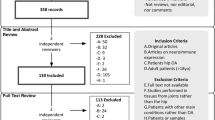Abstract.
Notch is known as a receptor that controls differentiation or proliferation in various cells and is associated with several diseases. The objective of the present study was to clarify whether human Notch homologues Notch-1, -2, -3, and -4 are expressed in synovium and synoviocytes from rheumatoid arthritis (RA) and osteoarthritis (OA) patients. Immunohistochemical staining showed that Notch-1, -2, and -3 were clearly expressed in the synovium from both RA and OA, whereas Notch-4 was only slightly detected. We further performed Western blotting with the same antibodies used in immunohistochemical staining. Notch-1 and -2 were strongly detected in both RA and OA, and the expression of Notch-3 was slightly detected, while there was no Notch-4 expression in both RA and OA synoviocytes. In contrast, all Notch homologues were strongly expressed in the synovium at the developmental stage obtained from the infant. These results indicate that the expression pattern of Notch among synovium from OA and RA patients differed from that of normal subjects.
Similar content being viewed by others
Author information
Authors and Affiliations
Additional information
Electronic Publication
Rights and permissions
About this article
Cite this article
Ishii, H., Nakazawa, M., Yoshino, SI. et al. Expression of Notch homologues in the synovium of rheumatoid arthritis and osteoarthritis patients. Rheumatol Int 21, 10–14 (2001). https://doi.org/10.1007/s002960100119
Received:
Accepted:
Issue Date:
DOI: https://doi.org/10.1007/s002960100119




